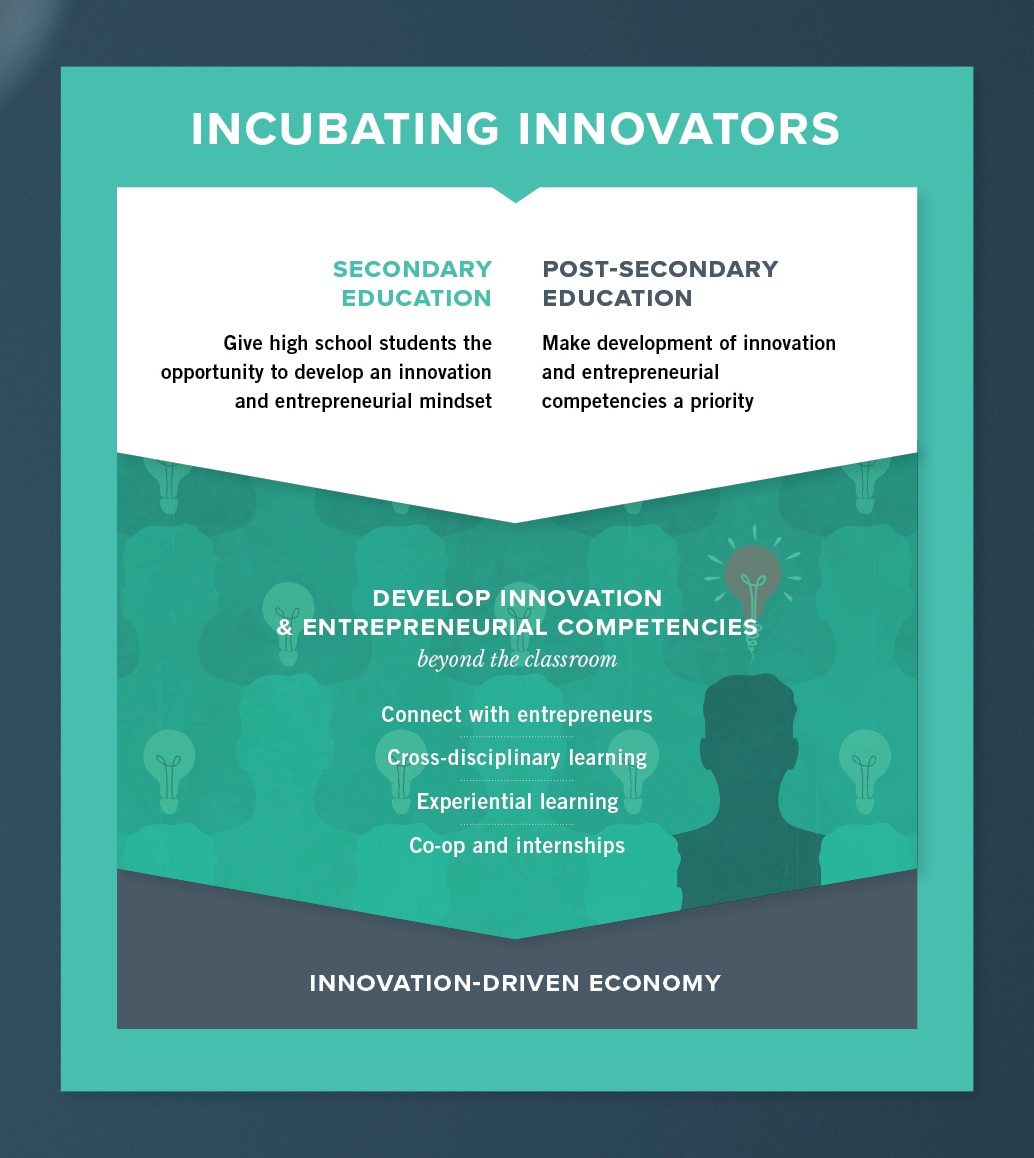Authors: Liam St. Louis and Janet Lane
Executive Summary
Canada lags behind its peers in commercializing new processes, products and services – in driving innovation. Consequently, the country is losing competitiveness. One reason for this is that many firms have trouble hiring people with the capacity to innovate.
Furthermore, firms need to adapt in a world where new technologies are being brought on stream at an increasing pace and young people must learn how to find, create and keep work as traditional jobs are being eliminated.
To address these challenges, Canada needs more innovators, entrepreneurial employees and entrepreneurs. This paper focuses on how we can help to develop them.
Fortunately, we have educational options to help our youth develop both innovation and entrepreneurial mindsets and competencies. These competencies include the ability to generate ideas, solve problems, work with others, cope with ambiguity, be tenacious, be creative, take risks, fail and try again, and more.
Canada’s post-secondary entrepreneurship education programs are booming. They have moved beyond the business school and are incorporating students and curricula from other faculties, including arts, science and engineering. The interdisciplinary approach and diversity of learners in these programs helps to build innovation and teamwork competencies. Teaching methods have moved beyond traditional classroom models. Opportunities to problem-solve and do real work in innovative and entrepreneurial settings are often a fundamental aspect of these programs. Some programs are offered on a co-op basis, so students may take a whole semester to start their own business or work in an innovation incubator or accelerator.
Entrepreneurship education is not only for post- secondary students. Governments across the country have recognized that more is needed to encourage the entrepreneurial mindset in K-12 students. Secondary students have opportunities to learn entrepreneurial competencies through third-party experiential learning programs. Two of these programs, SHAD and Junior Achievement, are highlighted in the paper.
Entrepreneurial competencies are being recognized as skills for the 21st century. The paper recommends that we incubate more next generation innovators by:
> Giving high school students, through classroom and co-curricular experiences, the opportunity to develop an innovation and entrepreneurial mindset, and
> Making development of innovation and entrepreneurial competencies a priority for post-secondary institutions.
Traditional classroom approaches are not enough. Developing innovation and entrepreneurial competencies requires policy and funding changes that will enable opportunities for students, including:
> Exposure to and engagement with entrepreneurs
> Cross-disciplinary learning
> Experiential learning within the complete innovation cycle
> Co-op and internship work experiences.

